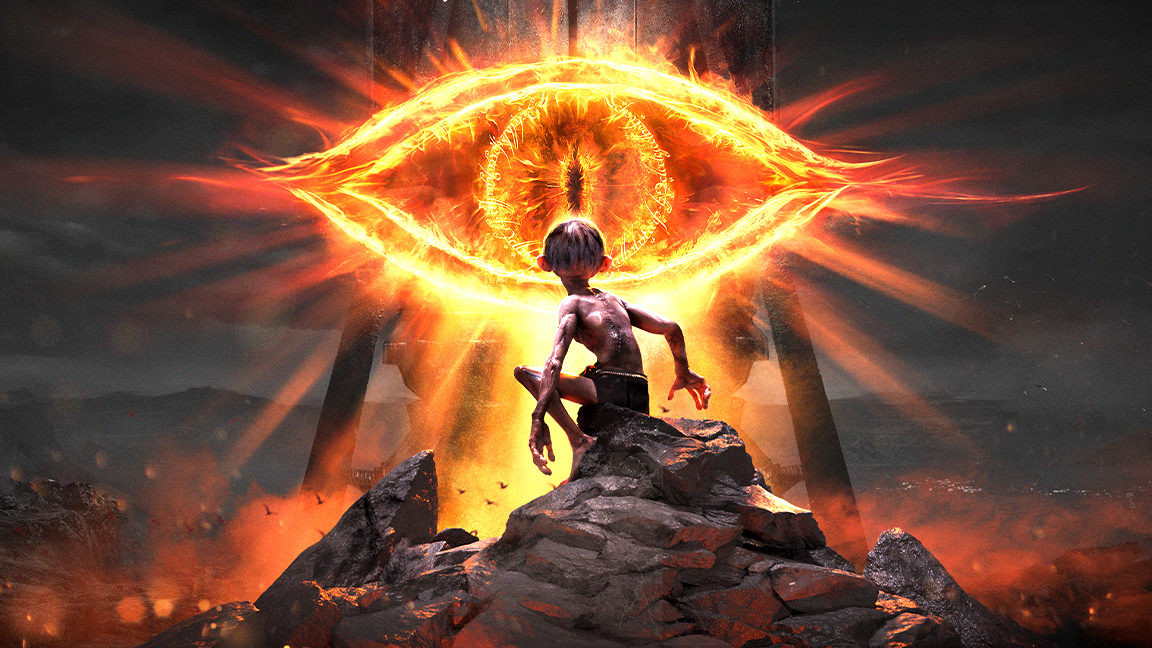
The art and design of The Lord of the Rings: Gollum is outstanding, as you would expect from a PS5 game based around Tolkein’s epic fantasy world of Middle-earth. Each area of the game, from Mirkwood to Barad-dur tower and Cirith Ungol, is beautifully rendered, almost painted onto the screen. But there's a fun character design insight I just discovered.
Below I speak with Daedelic Entertainent's art lead Mathias Fischer, who discusses the challenges of bringing Gollum to life on PlayStation 5 in a new and interesting way. Fischer explains how when designing Gollum, the large eyes and expressive face, needed to make this grungy character approachable, gave him a "resemblance to something like Elmo". It's exclusive, tickle-me Gollum is coming this Christmas.
The Lord of the Rings: Gollum is essentially a stealth game set in Middle-earth and follows the titular character's adventure eight years before we meet him in The Lord of the Rings: Fellowship of the Ring. The fact we have yet another new take on Tolkien's world is testament to how strong the brand and world building is, in the past we've seen how the Ring of Power logo was created from literal fire and how that Amazon show's Lord of the Rings posters were a genius idea.
This is a complex and interesting game that aims to make a, frankly, weird and disgusting character its hero. The art team has gone to great lengths to design a version of Gollum who is approachable and engaging, his scurrying duplicitous nature is turned into game design and as Fischer revealed, the character's design is a little lovable. Read on for my full interview with the game's art lead.
The art behind The Lord of the Rings: Gollum
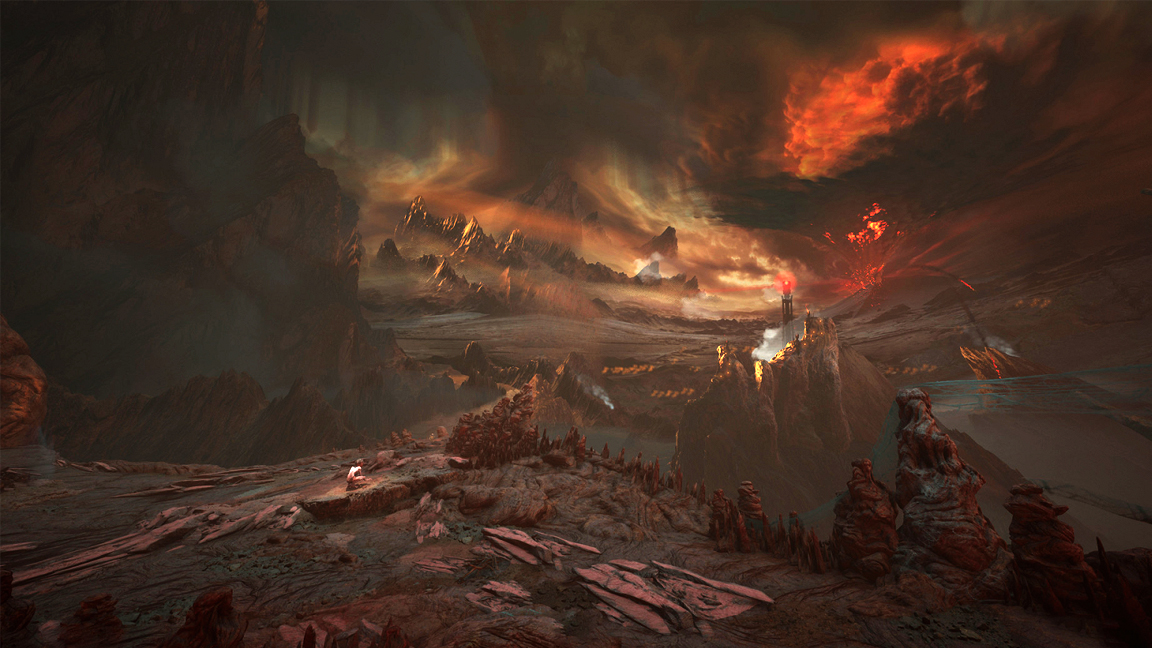
What was your inspiration for the design of Gollum in the game?
To design an iconic character like this was quite the challenge. We decided early on to build him from the ground up and try a fresh take. We looked into Tolkien's description of course, but also into earliest visual takes on the character, which tended to be quite amphibian. Like a creature that is emerging from the swamps. There were also inconsistent reports of Gollum having webbed hands or wearing dark clothing. [There's a] lot to go on.
Can you describe the process of bringing Gollum to life for the game?
The entire process was accompanied by our partners at Middle-earth Enterprises. First rough ideas and sketches went back and forth. They showered us with background information about the character, about his travels and his personality. Altogether it was an ultra nice experience and a very fruitful collaboration.
Even at points in which we had the impression to go too far and a little off the boat with the designs, they’ve sent us pictures of deepsea blobfishes, to describe Gollum’s skin consistency better and maybe giving him a little extra on the blobfish side, to make the smeagol faces more relatable.
How did you balance staying true to the original depiction of Gollum while creating a fresh take?
When it comes to his basic visual appearance we took Tolkien’s description to heart; six teeth, pale eyes, height about 110 cm, wrinkly oily skin.
The biggest problem that we needed to tackle was how to make him relatable. Or at least that the player wants to spend some time with both of them, Gollum and Smeagol. Also rooting for at least one of the two in the course of a playthrough.
This came with a lot of visual ideas. The face had to be very expressive and also was the main focus of making him sympathetic. We had roughs with very big cartoonish eyes, a broad mouth that went from ear to ear, almost giving him resemblance to something like Elmo.
We gave ourselves no restrictions of making him fit with the more “normal” looking humanoid characters of our world. He had to be special, he had to stand out. I mean, it’s Gollum.
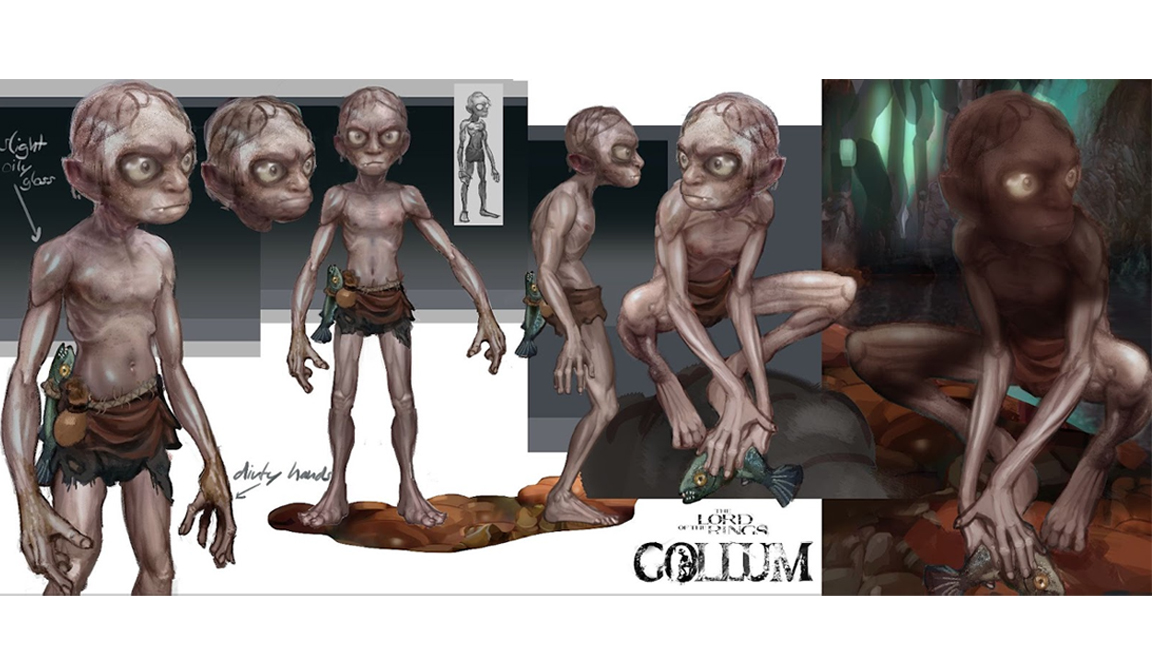
What was the most challenging aspect of designing Gollum?
Definitely the hair. Technology changed so rapidly in the course of this production and we started out with a more traditional cards groom. This proved quite challenging since we only worked with a few hair strands that had to look and behave halfway realistically. Also this kind of groom is more forgiving with dense hair.
After several iterations and a lot of try and error, we started from the ground up with Xgen and spline based hair. This proved to be the perfect choice, especially with Epics support of strand based hair inside of Unreal Engine. (Read our Unreal Engine 5 review.)
How did you incorporate the character's personality and backstory into the design of Gollum?
To support the parkour heavy gameplay, Gollum's physique had to reflect that as good as possible. But here as well just Tolkien's description and the characters' history did most of the work.
A hobbit that spends 500 years of rock climbing, tracking and hunting, will have a certain look and muscle shape. So we incorporated that into his design. Not necessarily buff, rather sinewy and powerful. A body that makes the rumours surrounding him believable (a dark shadow hanging from ceilings / climbing with just the strength in his fingers with the help of just the smallest cracks in the rock / and of course baby abducting and eating).
His movement itself was a creative choice from our game's direction. He is supposed to feel more like an insect while climbing, fast / fluid and very in control.
The game or rather Gollum’s travels themself are a constant struggle between his Gollum and Smeagol Persona. Gollum is the survivalist who is taking care of smeagol in a way but also uses him for his own means. Smeagol on the other hand is still more childish on the hunt for friends and eager to reconnect to other people.
Both are liars though who crave the ring more than anything. We wanted these personas to be reflected on our main character, not only in cutscenes, in regular gameplay as well. We do this with Idle animations / Idle breakers that are persona specific, adjust pupil sizes and change overall demeanour.
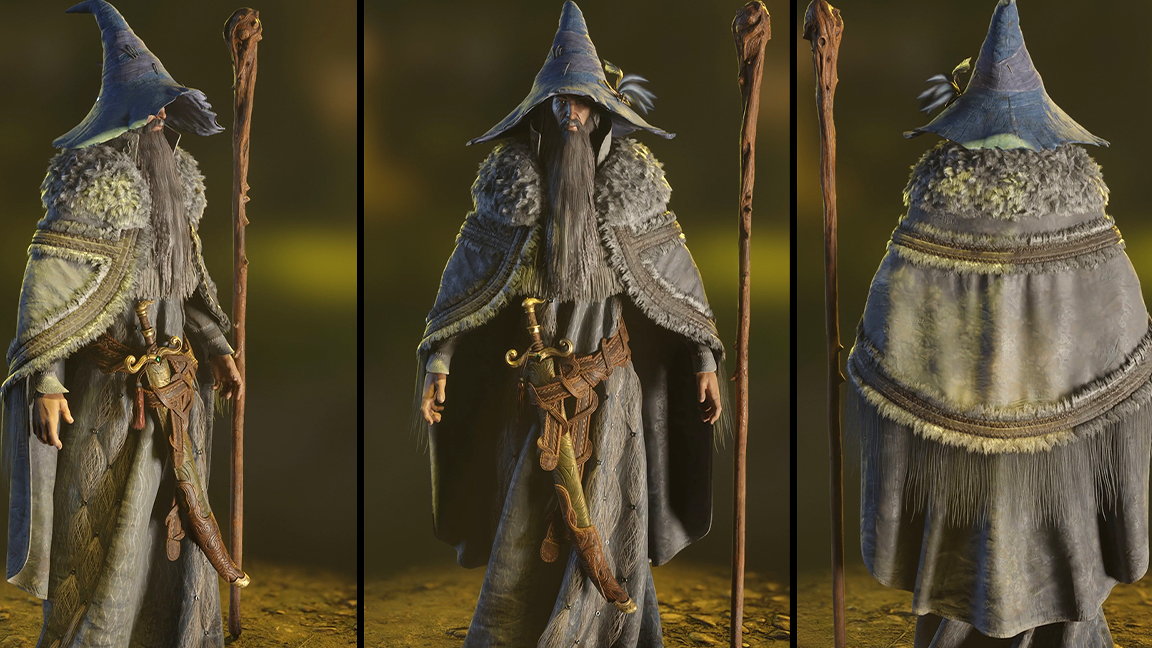
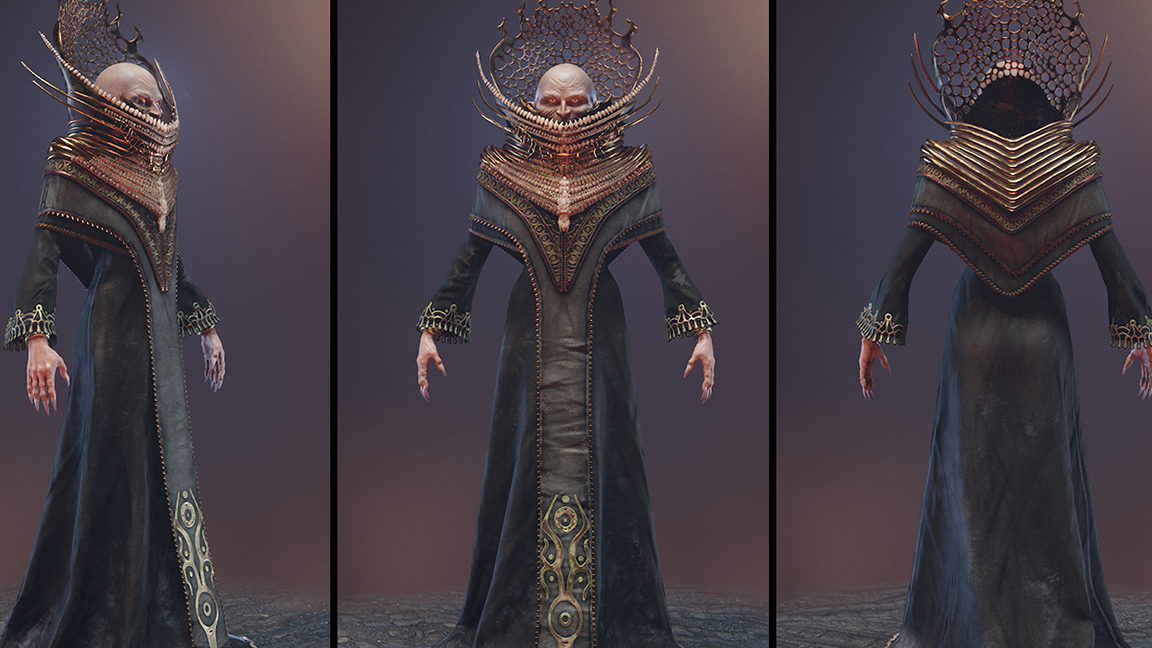
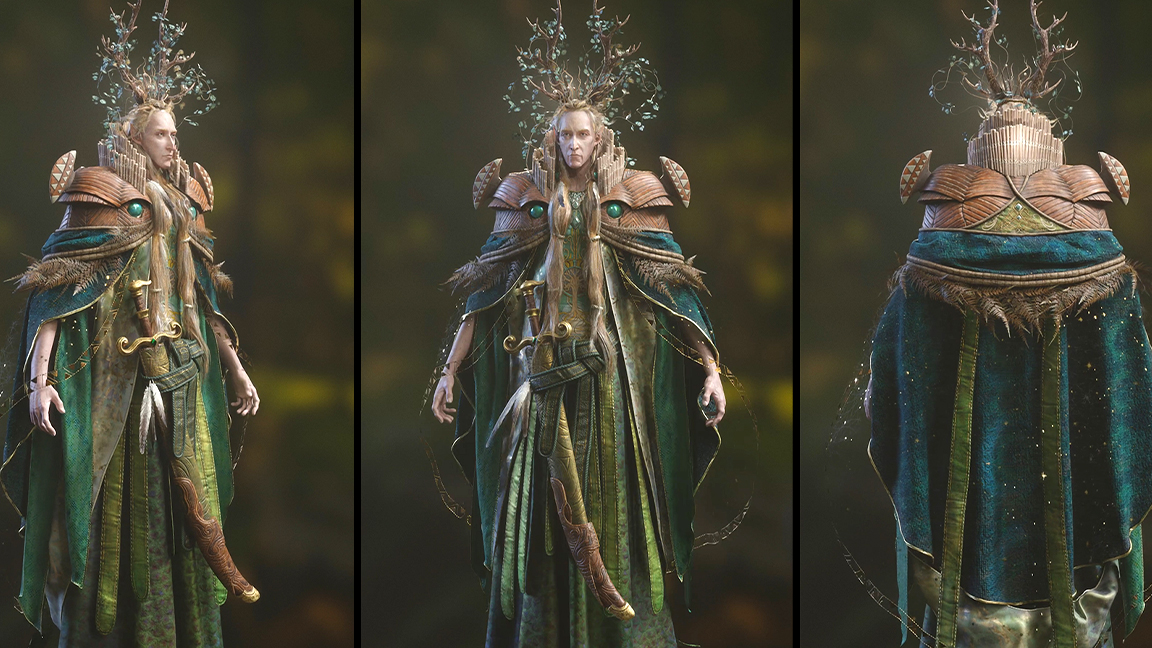
What was your favourite part of designing Gollum?
I think the entire package. It was just a huge honour and an amazing privilege at the same time. No matter how the game turns out, those opportunities usually don't come twice in a lifetime.
How did you ensure that Gollum was both recognisable to fans of the franchise and accessible to new players?
You cannot stray too much of course with such a famous character. But even if we wanted to, straying would also mean straying away from Tolkien, which we tried to avoid at all cost.
How did you balance making Gollum realistic with making him playable?
I tend to think or hope, that when people are picking up our game that they are not out for a to the teeth realistic Gollum experience. Our creative direction was trying very hard to deliver a fun playthrough more than anything else and the character of Gollum plays into that I think. He is very trained and agile, can do long jumps and climb huge distances, and also fits into the smallest holes.
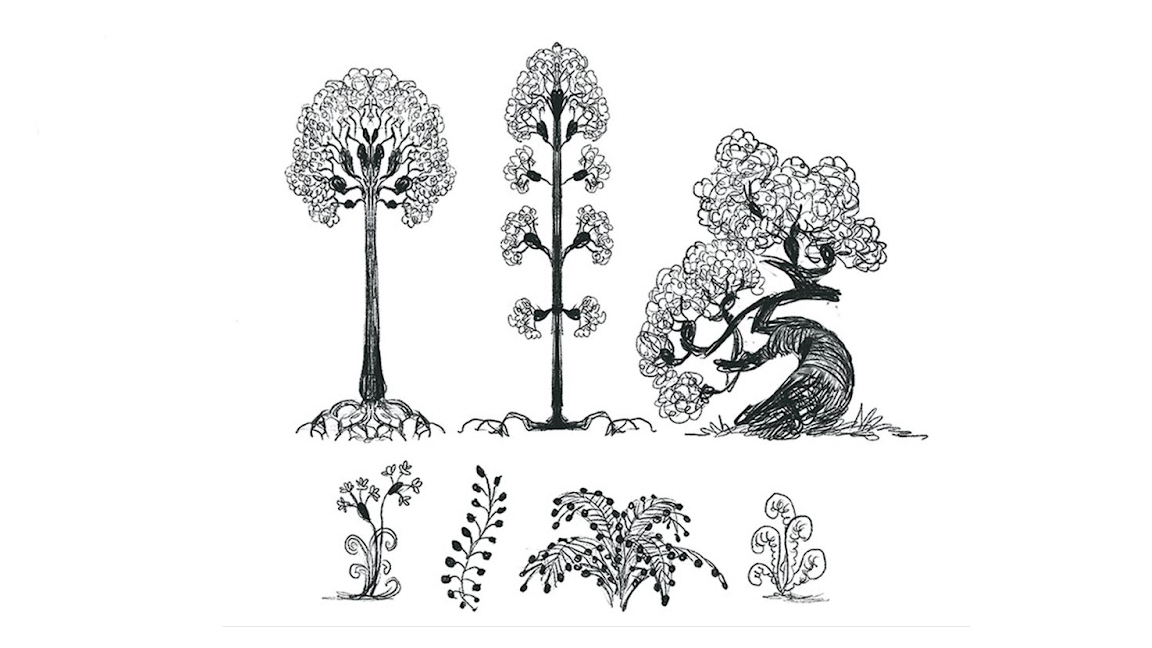
How did you approach designing the environment and surroundings to fit Gollum's look or signal to players what to expect from this part of the game's world?
At the beginning of the production we were all heavily inspired by amazing fantasy illustration and paintings, from the likes of Ian Miller or Donato Giancola. We started to analyse them a bit, to find traits we could emulate into our environments without straying too far off into stylisation. After all, we wanted to recreate a semi realistic look for our middle earth.
One thing we discovered was that a colour palette inspired by such illustrations would counter guidance a stealth game so desperately needs or might overwhelm players. Colours tend to be washed out and desaturated, light sources distribute diffuse light very evenly, looking like the sky is constantly overcast. This poses a huge problem for a game that has a major focus on stealth and requires a hard light and shadow dynamic.
Shapes and surfaces on the other hand played right into the hand of a middle earth stealth action adventure. We discovered that our favourite references tend to stylise objects, landscape, nature and all kinds of props in a certain way. We called it 'stylised verticality'.
Vertical props that are building the scenes, are stylised in their flow and movement in itself and generate a decorative look we associate with a fantasy scenario. Trees for example that are so perfect and even and through their symmetrical designs almost stop looking like trees. The viewer gets the impression of stepping into a temple rather than a forest.
Similar with surfaces. We wanted our textures to look like they’ve come from an illustrator, who got lost in a tiny corner of their work just scribbling away. Playful, very detailed shapes that tend to become patterns in the bigger picture and create a very natural fantasy feel.
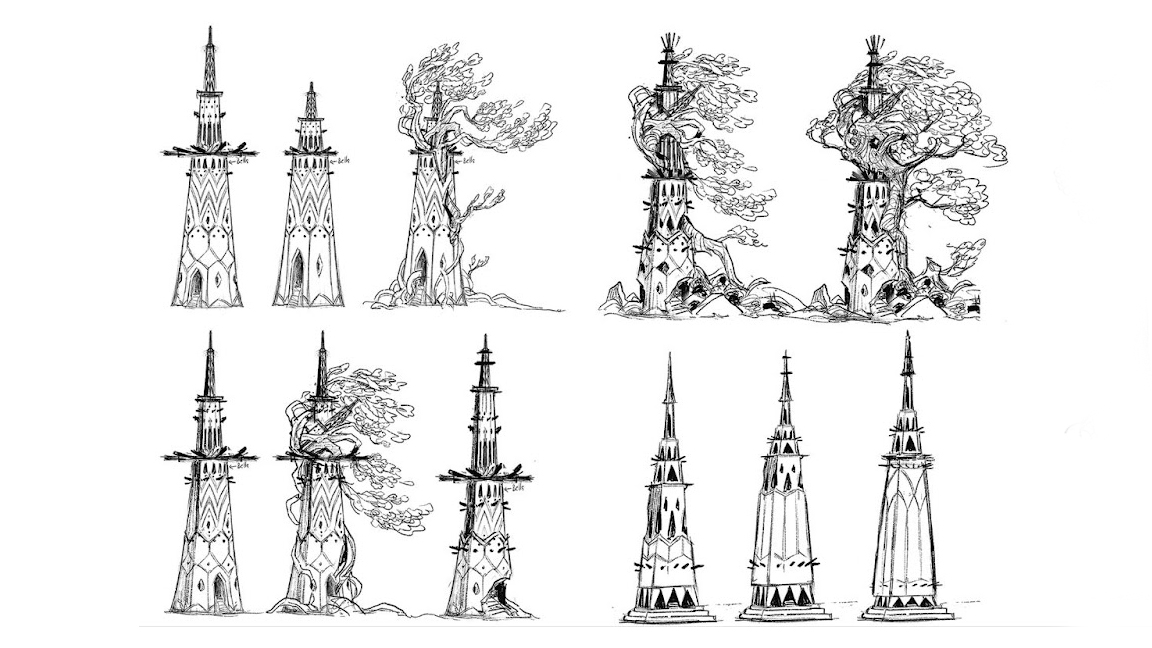
Can you talk about any major revisions or changes you made to Gollum's design throughout the development process?
The model was subject to constant changes and revision throughout the entire production. Reasons for this were community feedback of course, changing technologies and overall improvements. The face was always under heavy scrutiny.
At one point during the production we did an actual re-model and complete texture iteration. It’s very visible if you compare the first released screenshots from 2020 with the final model in the actual game. His entire jaw got smaller, eyes and nose got a new shape and so on. The result was a sharper and more alert appearance which appealed to us.
How did you work with the game's voice actors to ensure that Gollum's design matched the character's voice and mannerisms?
Handing over to our narrative director Tilman Schanen for this one: Wayne Forester, who voiced Gollum, knew the material very well and basically had the voice figured out already coming in, so this didn't require a lot of effort to begin with.
We then showed him concepts, animations and gameplay from the game. For the cinematics, he did the voice while simultaneously watching the mocap material. That's a tricky thing to do, but luckily, he was excellent at it.
What advice would you give to aspiring video game artists looking to create memorable and iconic characters like Gollum?
It’s quite tough, especially with characters that are so visually present like Gollum. Everybody has a fixed image in their mind of how and why the character looks like he does. It’s absolutely impossible to please everyone with a new interpretation.
It definitely helps though to have a clear idea in your head as well and try to follow it as best as you can and be ready to defend it in front of a myriad of people who need convincing. There will be a lot of criticism from all sides but most just want to be convinced that this is the right direction.
If you're looking to hire a new artist or animator, what do you look for?
I think the same things that everybody is looking for. Clean structured work, endless creativity, lots of initiative and jaw dropping artistic results.
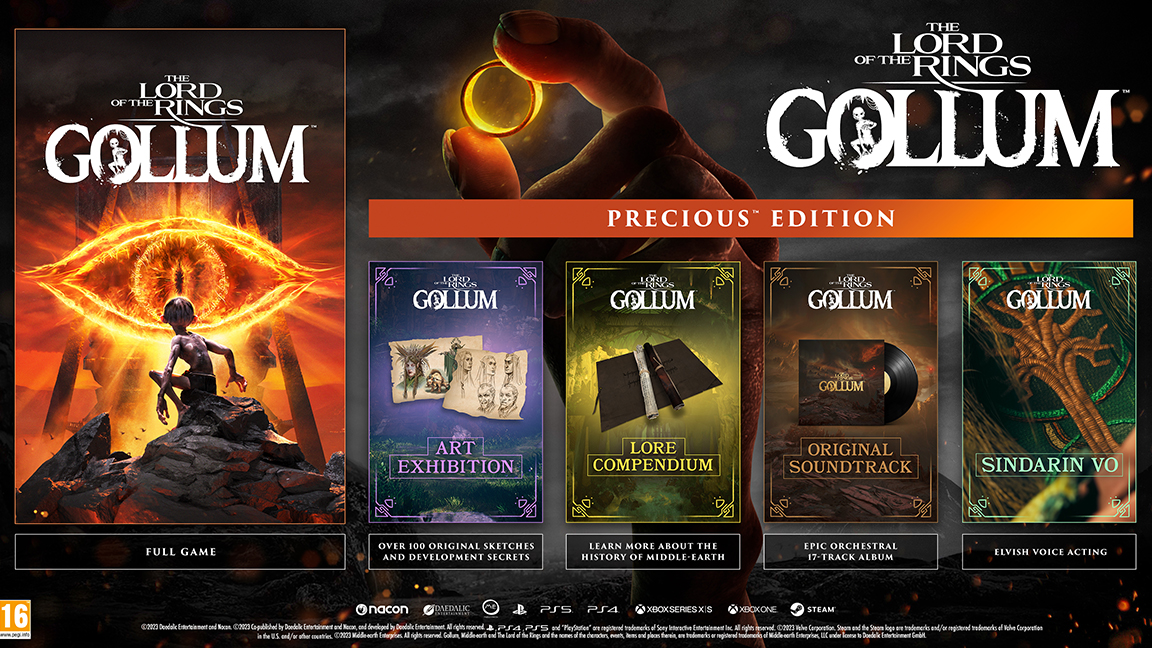
The Lord of the Rings: Gollum is one of the most anticipated games of 2023 and one of the best upcoming PS5 games. Developed by Daedalic Entertainment and published by Daedalic Entertainment and Nacon, The Lord of the Rings: Gollum releases 25 May for PlayStation 4, PlayStation 5, Xbox One, Xbox Series X|S, Nintendo Switch and PC.
The Precious Edition of The Lord of the Rings: Gollum comes with a beautiful art book filled with over 100 original sketches and concept art.
Get the Creative Bloq Newsletter
Daily design news, reviews, how-tos and more, as picked by the editors.

Thank you for reading 5 articles this month* Join now for unlimited access
Enjoy your first month for just £1 / $1 / €1
*Read 5 free articles per month without a subscription

Join now for unlimited access
Try first month for just £1 / $1 / €1

Ian Dean is Editor, Digital Arts & 3D at Creative Bloq, and the former editor of many leading magazines. These titles included ImagineFX, 3D World and video game titles Play and Official PlayStation Magazine. Ian launched Xbox magazine X360 and edited PlayStation World. For Creative Bloq, Ian combines his experiences to bring the latest news on digital art, VFX and video games and tech, and in his spare time he doodles in Procreate, ArtRage, and Rebelle while finding time to play Xbox and PS5.
